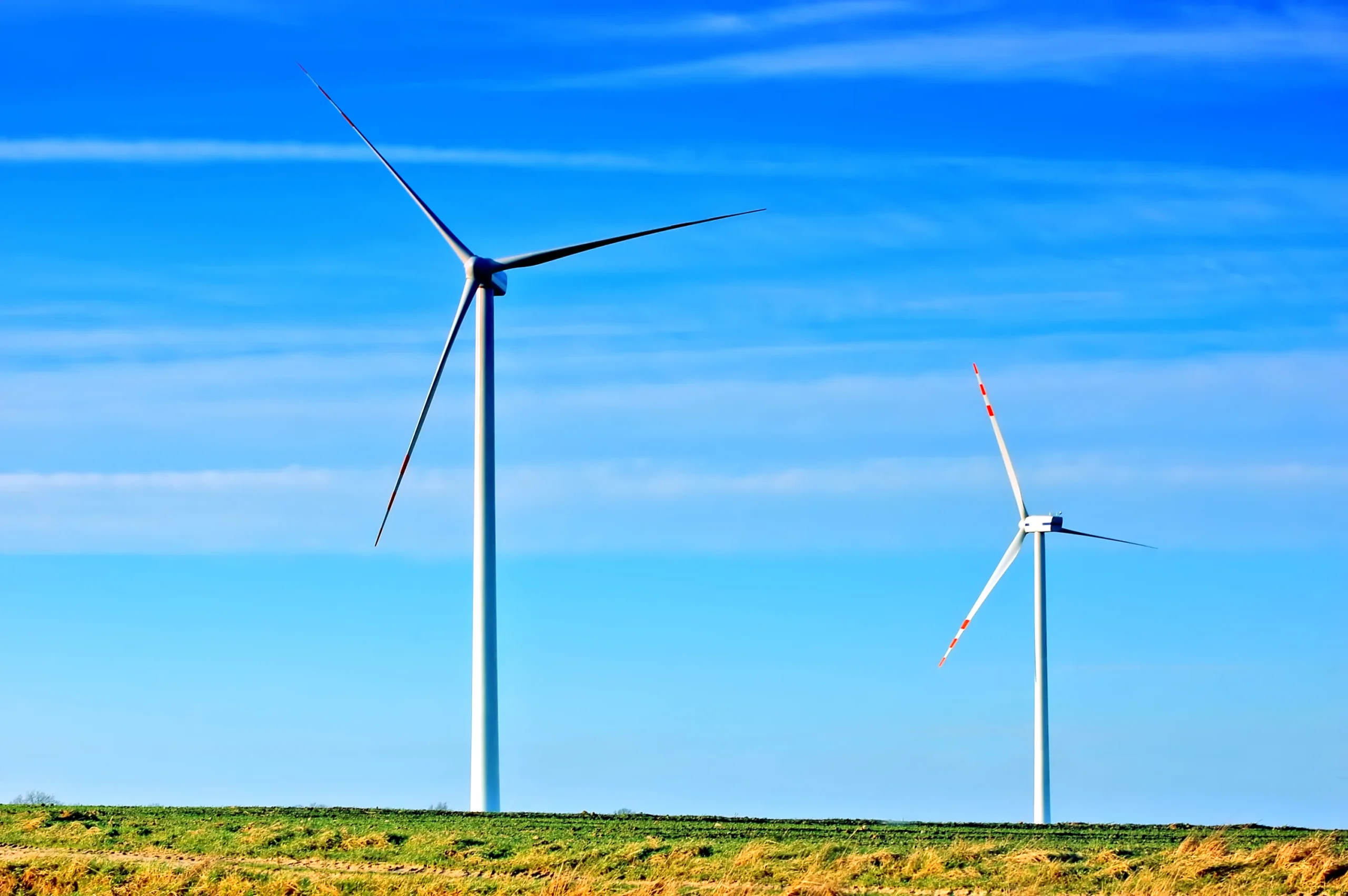Introduction
With the growing demand for renewable energy sources, wind turbines have become a common sight around the world. These towering structures, with their slowly rotating blades, are more than just impressive feats of engineering—they are a crucial component of our global shift toward sustainable energy. But how exactly does a wind turbine generate power? In this article, we will explore the science and mechanics behind wind turbines, how they convert wind into electricity, and why they are an essential part of our clean energy future.
Understanding the Basics of Wind Turbines
Wind turbines are devices that convert the kinetic energy of the wind into electrical energy. They are an integral part of wind farms, which are clusters of turbines that generate significant amounts of electricity. The primary components of a wind turbine include the rotor blades, the nacelle (which houses the generator and gearbox), and the tower.
Key Components of a Wind Turbine
- Rotor Blades: The rotor blades are the most visible part of a wind turbine. Most turbines have three blades that are aerodynamically designed to capture wind energy efficiently. When the wind blows, it creates lift (similar to an airplane wing) on the blades, causing them to spin.
- Nacelle: The nacelle is the housing that sits atop the turbine tower. It contains the key mechanical parts, including the gearbox, generator, and control systems. The nacelle plays a crucial role in converting the kinetic energy from the rotor blades into electrical energy.
- Tower: The tower supports the nacelle and the rotor blades, elevating them to a height where they can capture stronger and more consistent wind currents. Towers can vary in height but are typically between 80 to 120 meters tall.
- Gearbox: The gearbox is responsible for increasing the rotational speed from the slow-moving blades to a higher speed suitable for electricity generation. It connects the low-speed shaft from the blades to the high-speed shaft of the generator.
- Generator: The generator converts mechanical energy into electrical energy. When the rotor blades turn, they spin a shaft connected to the generator, creating electricity.
- Anemometer and Wind Vane: These devices measure wind speed and direction, providing critical data to the turbine’s control system. The control system adjusts the turbine’s position and rotor speed to maximize energy capture.
How Wind Turbines Convert Wind into Electricity
Step-by-Step Process of Power Generation
Wind turbines generate power through a series of steps that involve capturing the wind, converting it into mechanical energy, and then transforming that mechanical energy into electricity. Here’s a breakdown of the process:
- Wind Captures the Blades: When the wind blows, it flows over the rotor blades, creating lift and causing them to rotate. The rotation is a result of the aerodynamic design of the blades, which creates a pressure difference between the two sides, much like an airplane wing.
- Rotor Blades Spin the Shaft: The spinning blades are connected to a low-speed shaft inside the nacelle. As the blades rotate, they turn this shaft, which is connected to a gearbox.
- Gearbox Increases Rotational Speed: The gearbox takes the relatively slow rotation of the blades (around 30 to 60 RPM) and multiplies it to a much higher speed (usually around 1,500 RPM) suitable for electricity generation. This high-speed rotation is transferred to the generator.
- Generator Produces Electricity: The generator converts the mechanical energy from the high-speed shaft into electrical energy. Inside the generator, the rotation of magnets creates a flow of electrons—essentially generating electricity.
- Electricity is Sent to the Grid: The electricity produced by the generator is sent through a transformer, which converts it to the appropriate voltage level for the electrical grid. The electricity is then distributed through transmission lines to homes, businesses, and other users.
Types of Wind Turbines and Their Power Generation
Wind turbines come in various designs, but they can generally be classified into two main types: Horizontal Axis Wind Turbines (HAWTs) and Vertical Axis Wind Turbines (VAWTs). Each type has its specific design and method of generating power.
Horizontal Axis Wind Turbines (HAWTs)
HAWTs are the most common type of wind turbines and are characterized by their propeller-like blades and a horizontal rotor axis. These turbines are highly efficient, especially in locations with strong, steady winds. HAWTs typically have a large blade span and are mounted on tall towers to capture the most wind.
Vertical Axis Wind Turbines (VAWTs)
VAWTs have a vertical rotor axis and are less common than HAWTs. These turbines can capture wind from any direction and are often used in urban environments or locations where wind direction is variable. While VAWTs are generally less efficient than HAWTs, they offer some unique advantages, such as easier maintenance due to their ground-level components.
Factors Affecting Wind Power Generation
Several factors influence how much electricity a wind turbine can generate:
- Wind Speed: The most critical factor in power generation is wind speed. Wind turbines are designed to operate within a specific range of wind speeds, typically between 7 to 50 miles per hour. The power output increases exponentially with wind speed; hence, higher wind speeds result in significantly more electricity.
- Turbine Size and Design: The size and design of the turbine also play a crucial role. Larger turbines with longer blades can capture more wind energy, leading to higher power output.
- Location and Wind Conditions: The location of a wind turbine greatly impacts its efficiency. Ideal sites are often on open plains, coastal areas, or offshore where wind is strong and steady.
- Air Density: Air density, which is affected by altitude, temperature, and humidity, also affects the amount of energy a turbine can generate. Denser air, found at lower altitudes and colder temperatures, contains more energy.
The Environmental Benefits of Wind Power
Wind energy is a clean, renewable source of power with numerous environmental benefits:
- No Greenhouse Gas Emissions: Unlike fossil fuels, wind power generates electricity without emitting greenhouse gases or pollutants, helping combat climate change.
- Sustainable and Renewable: Wind is an inexhaustible resource. As long as the wind blows, it can be harnessed to produce electricity.
- Minimal Land and Water Use: Wind farms have a relatively small footprint compared to other forms of energy generation, and they do not require water for cooling, unlike nuclear or coal power plants.
Challenges and Future of Wind Power Generation
While wind energy offers numerous benefits, it also faces some challenges:
- Intermittency: Wind is not constant; it varies in speed and direction, making it an intermittent energy source. This variability requires backup systems or energy storage solutions.
- Noise and Aesthetic Concerns: Some people living near wind farms have concerns about noise from the turbines and the visual impact on landscapes.
- Wildlife Impact: Wind turbines can pose a threat to birds and bats, although ongoing research aims to mitigate these effects.
Looking forward, advances in turbine technology, improved storage solutions, and strategic placement are expected to enhance the efficiency and reliability of wind power, making it a critical component of the future energy mix.
Conclusion
Wind turbines play a vital role in generating renewable energy, transforming the kinetic power of the wind into clean, sustainable electricity. Through their intricate design, they capture wind energy, convert it into mechanical energy, and ultimately produce electrical power that feeds into the grid. While there are challenges, the benefits of wind energy—including its renewability, minimal environmental impact, and potential for technological advancement—make it a key player in the global shift toward sustainable energy solutions. As technology evolves, wind power will continue to expand, contributing to a greener, more sustainable future for all.


